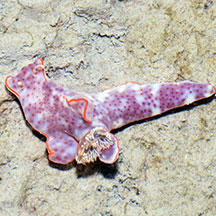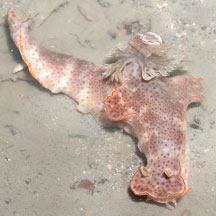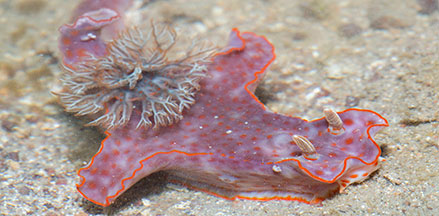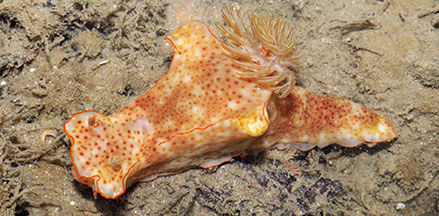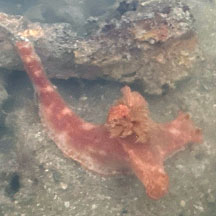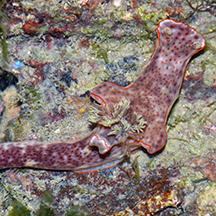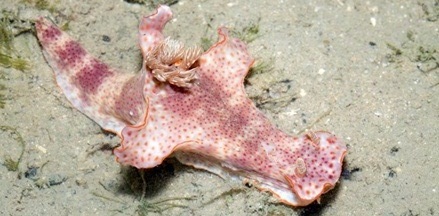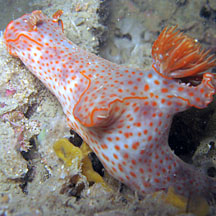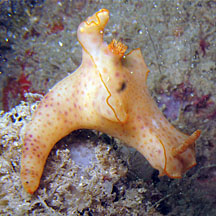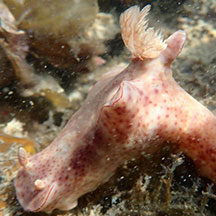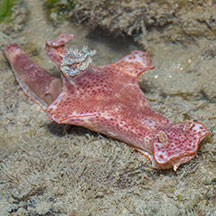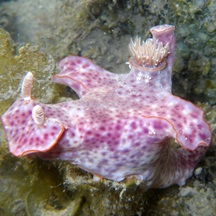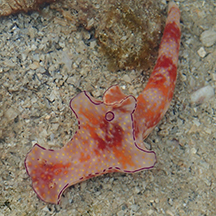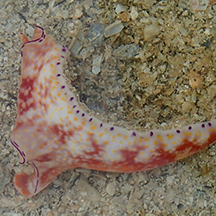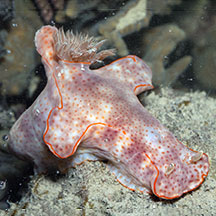 |
|
| nudibranchs text index | photo index |
| Phylum Mollusca > Class Gastropoda > sea slugs > Order Nudibranchia |
| Slender
ceratosoma nudibranch Ceratosoma gracillimum Family Chromodorididae updated May 2020 Where seen? This large chunky hard nudibranch is more commonly seen by divers and sometimes seen on the intertidal on coral rubble near reefs. Features: 6-8cm long. The body is stiff, narrow with a long, slender tail.
There is a pair of elongated lobes on the sides (looks like 'wings'). At the body end over the tail, a large horn-like lobe, where the feathery
gills emerge. The head is flat wedged-shaped with a pair rhinophores. The edges of the lobes and head are generally slightly wavy with a fine line of bright orange. The rest of the body generally speckled (orange, pink) with blotches of darker colour over a pale background. |
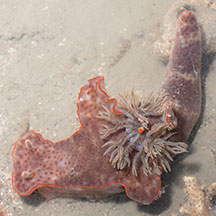 Beting Bronok, Aug 15 |
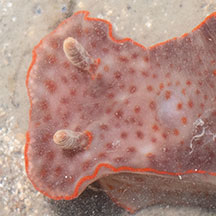 Rhinophores. |
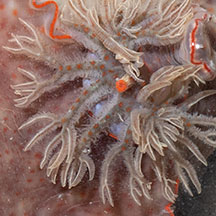 Feathery gills. |
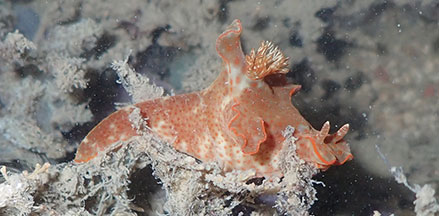 Side 'wings', large lobe over the tail and wedge shaped head. Beting Bronok, Jul 19 |
||
| Sometimes mistaken for the 'Jolly Green Giant' nudibranch (Ceratosoma sinuatum) which has
regular undulating lobes along the edge of the mantle from the head
to the tail. What does it eat? It is eats sponges. |
| Slender ceratosoma nudibranchs on Singapore shores |
On wildsingapore
flickr
|
| Other sightings on Singapore shores |
Links
References
|
